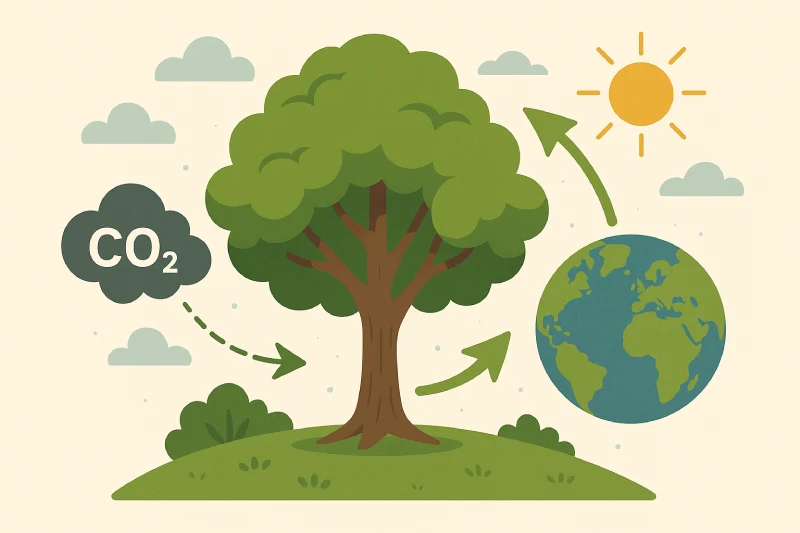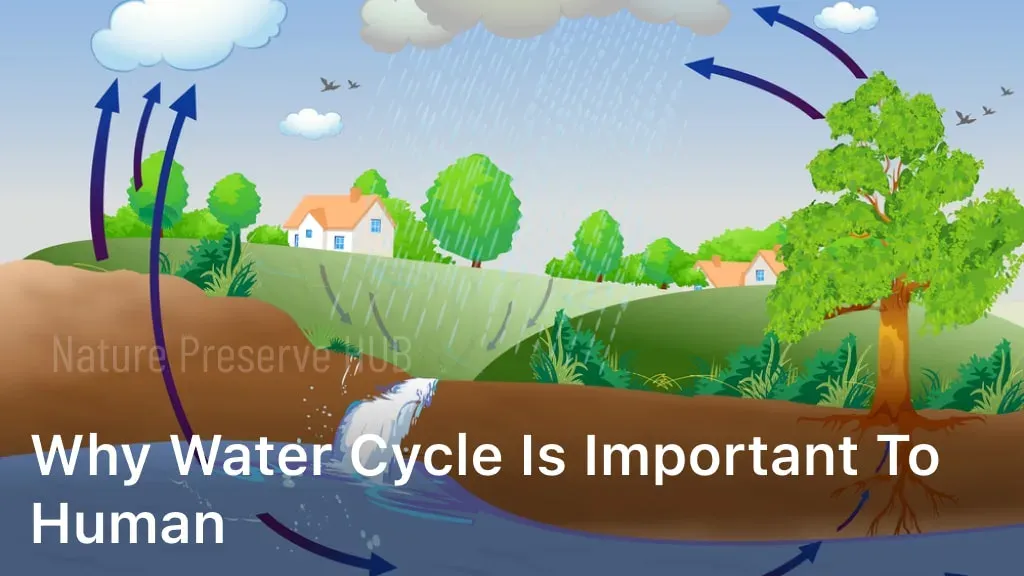Curious about how trees combat climate change? Discover the science behind how trees help absorb CO2, cool the Earth, and support biodiversity. Learn why forests are essential in the fight against global warming and how we can all contribute to a greener planet
In recent years, the conversation about climate change has reached a critical point. While governments and organizations across the globe debate policies and regulations, one powerful ally in the fight against climate change often gets overlooked—trees.
Trees are more than just beautiful parts of our landscape; they play a vital role in keeping our planet healthy. In this article, we’ll explore the science behind how trees combat climate change, their many environmental benefits, and how reforestation and afforestation efforts can make a significant difference.
Table of Contents
ToggleHow Trees Combat Climate Change
Trees play a critical role in combating climate change through various processes. Here’s how they help:
-
Carbon Sequestration: Trees absorb carbon dioxide (CO2) from the atmosphere during photosynthesis. They convert CO2 into glucose, which is stored in the tree’s roots, stems, and leaves. This reduces the overall concentration of CO2 in the air, which is a major greenhouse gas contributing to global warming.
-
Oxygen Production: While absorbing CO2, trees release oxygen as a byproduct of photosynthesis. This helps maintain oxygen levels in the atmosphere, which is essential for the survival of many organisms, including humans.
-
Temperature Regulation: Trees provide shade and cool the environment through a process known as transpiration, where water is released from the leaves into the atmosphere. This can help reduce urban heat islands and moderate temperatures, especially in cities.
-
Soil Stabilization: Tree roots help stabilize the soil, preventing erosion. Healthy soil stores carbon as well, and forests can act as natural barriers to floods, which have been intensified by climate change.
-
Biodiversity Preservation: By providing habitats for a wide variety of plants and animals, forests support biodiversity, which is vital for ecosystem resilience. The more resilient ecosystems are, the better they can adapt to climate change.
-
Forest Restoration: Planting and protecting forests can help restore damaged ecosystems. Restoration not only helps to capture more carbon but also enhances the overall health of the planet’s ecosystems.
So, in essence, trees are like nature’s air filters, climate regulators, and protectors of biodiversity, all while helping to mitigate the negative effects of climate change.
The Science Behind Trees and Climate Change
Photosynthesis
When we think of climate change, we often think of rising temperatures and the greenhouse gases that contribute to the problem. One of the key greenhouse gases responsible for global warming is carbon dioxide (CO2), and trees play a major role in reducing this gas in our atmosphere.
Through a process called photosynthesis, trees absorb CO2 and convert it into oxygen, which is crucial for life on Earth.
During photosynthesis, trees take in sunlight, water, and carbon dioxide, and through a chemical reaction, produce glucose (a form of energy) and oxygen.
This process not only benefits the tree itself but also helps to remove excess CO2 from the air, making trees an essential tool in the fight against climate change.
Carbon Sequestration
Beyond just absorbing CO2 in the short term, trees also store it in their trunks, roots, and leaves for decades or even centuries. This process is known as carbon sequestration, and it’s a long-term way trees help combat climate change.
As trees grow, they capture and store carbon from the atmosphere in their biomass. Forests, therefore, act as carbon sinks, holding onto vast amounts of CO2 that would otherwise contribute to the greenhouse effect.
In fact, it’s estimated that forests currently store about 30% of the planet’s carbon, making them one of the most efficient tools available to mitigate climate change.
The Role of Forests in Cooling the Earth
Forests also help cool the Earth in more direct ways. The process of evapotranspiration, where trees release water vapor into the atmosphere, helps regulate temperature. The shade provided by tree canopies also cools the surrounding area.
This cooling effect is especially important in urban areas, where concrete and asphalt absorb and retain heat, leading to “heat islands.” By increasing tree cover, we can help cool cities and reduce the overall warming effects of urbanization.
The Environmental Benefits of Trees Beyond Carbon Sequestration
Trees as Biodiversity Hotspots
Forests are home to more than half of the world’s biodiversity. They provide shelter and food for countless species of animals, insects, and plants, many of which cannot survive outside of forested ecosystems. When we protect forests, we protect this biodiversity, which is vital for maintaining the balance of ecosystems around the world.
Trees and Water Regulation
Trees also play a crucial role in regulating water cycles. They absorb water through their roots, which helps reduce the likelihood of floods during heavy rainfall. Additionally, by slowing down the flow of water, trees help maintain stable water levels in rivers and streams. This water regulation not only benefits local communities but also helps maintain agricultural productivity in the surrounding areas.
How Trees Prevent Soil Erosion and Protect Ecosystems
The roots of trees help bind the soil together, preventing soil erosion that can occur during storms or heavy rains. This is especially important in areas where deforestation has already left the soil vulnerable to erosion. By protecting soil, trees help maintain fertile ground for agriculture and protect the integrity of ecosystems.
The Global Impact of Deforestation on Climate Change
Unfortunately, not all forests are thriving. Deforestation, the act of clearing forests for agriculture, urban development, or logging, has significant consequences.
When trees are cut down, not only do we lose their ability to absorb carbon dioxide, but the carbon stored in those trees is also released back into the atmosphere. In fact, deforestation contributes to around 10-15% of global greenhouse gas emissions.
The Amazon Rainforest, often referred to as the “lungs of the Earth,” is one of the most well-known examples of deforestation’s impact on climate change.
As trees are cleared for cattle ranching and agriculture, vast amounts of carbon are released, and the forest’s ability to function as a carbon sink diminishes.
Similarly, deforestation in Southeast Asia, driven by the palm oil industry and illegal logging, has caused irreparable damage to biodiversity and further exacerbated climate change.
In light of these devastating impacts, it’s crucial that we focus on forest conservation efforts. Protecting existing forests is just as important as planting new trees.
We must ensure that our remaining forests are safeguarded from further deforestation and that policies are in place to encourage sustainable land-use practices.
How Reforestation and Afforestation Can Help
The Difference Between Reforestation and Afforestation
Two key methods for increasing tree cover are reforestation and afforestation. Reforestation refers to the process of replanting trees in areas where forests have been previously cut down or destroyed, while afforestation is the practice of creating new forests in areas that were not previously forested. Both methods can help mitigate climate change by increasing the amount of carbon dioxide trees can absorb.
Successful Reforestation Projects Around the World
Many countries and organizations have launched successful reforestation projects in recent years. One notable example is China’s Great Green Wall, which aims to combat desertification and climate change by planting trees across the country. Similarly, Kenya has seen success with its Green Belt Movement, which has planted millions of trees to restore degraded land and improve local livelihoods.
How Planting More Trees Can Mitigate Global Warming
Planting more trees, whether through reforestation or afforestation, can help offset emissions and slow the progress of global warming. The Intergovernmental Panel on Climate Change (IPCC) suggests that planting trees on a large scale could help reduce global temperatures by a significant amount. In fact, trees are one of the most cost-effective ways to combat climate change.
The Role of Urban Trees in Combatting Climate Change
Urban Forests
Urban areas are particularly vulnerable to climate change, as concrete and steel absorb and retain heat. This creates what are known as urban heat islands, where temperatures can be significantly higher than in surrounding rural areas. Trees help mitigate this effect by providing shade and releasing moisture into the air, which cools the surrounding environment.
Green Spaces and Their Role in Reducing Carbon Footprints
Adding trees and other green spaces to cities also helps reduce carbon footprints. Urban trees absorb carbon dioxide and provide a much-needed break from the constant flow of traffic, industry, and pollution. These green spaces improve air quality and create healthier environments for people to live in.
How Cities Can Integrate More Trees into Urban Planning
Cities around the world can take steps to incorporate more trees into urban planning. This might include planting trees in parks, along streets, or even on rooftops. By integrating more trees into urban landscapes, cities can reduce their carbon emissions, improve air quality, and make their inhabitants more resilient to climate change.
How Individuals and Organizations Can Contribute
Planting Trees
As individuals, we all have a part to play in the fight against climate change. Planting trees in our communities can make a big difference. Whether it’s in your backyard or through local tree-planting initiatives, every tree counts.
Supporting Organizations Focused on Tree Planting and Conservation
There are many organizations dedicated to planting trees and conserving forests. Supporting these organizations—either through donations or volunteer work—can amplify the positive impact we all can have on the environment.
The Role of Government and Policy in Promoting Tree Planting
Governments also play a key role in promoting tree planting. By passing policies that encourage afforestation, reforestation, and the conservation of existing forests, governments can help protect the planet for future generations.
Conclusion
Trees are powerful agents in the fight against climate change. They absorb carbon dioxide, store it long-term, and help cool the planet. In addition, they offer numerous other environmental benefits, from improving biodiversity to protecting water sources.
It’s up to all of us to take action—whether by planting a tree, supporting reforestation efforts, or advocating for forest conservation.
In the future, we will need to scale up our efforts to combat climate change, and trees will remain an essential part of that strategy. By continuing to protect and plant more trees, we can help ensure a healthier, more sustainable planet for generations to come.
For more on forest conservation and tree planting, check out Nature Preserve Hub.
FAQs
Can planting trees alone stop climate change?
No, planting trees alone cannot stop climate change, but it is a crucial part of a broader strategy to reduce carbon emissions and mitigate global warming. Trees absorb carbon dioxide, but addressing climate change requires systemic changes in energy, transportation, and industrial practices as well.
How much carbon can one tree sequester in its lifetime?
A single tree can sequester an average of 1 ton of CO2 over its lifetime, depending on the species and its growth environment. However, large-scale forest conservation and planting initiatives are needed to make a significant impact.
What are the best types of trees for fighting climate change?
Native tree species are often the best for fighting climate change because they are adapted to the local environment and provide the greatest biodiversity benefits. Trees like oaks, maples, and pines are commonly used in reforestation projects.
















